Traditional Agent Coaching
Typically, call centers have their supervisors coach their Agents on how to improve call quality. Call quality, in the vast majority of cases, is determined by a call quality evaluation process. SQM's research shows that traditional quality assurance (QA) has had little or no impact on improving First Call Resolution (FCR). However, traditional QA has positively impacted the call compliance type metrics (e.g., policy adherence, screen navigation, caller verification, and cross-selling).
Many call centers claim that their supervisors spend approximately 50% or more of their time coaching Agents to improve customer service. Four to five calls per Agent per month are evaluated in most cases, and Agents are coached once a month for less than one hour. That means that, typically, an Agent only receives 1.5 days total coaching time on an annual basis, and, in most cases, the coaching information is based on a traditional QA process. Also, across most of SQM's client base, the vast majority of supervisors are promoted from an Agent level. Coaching can be challenging for supervisors promoted from the Agent level and not adequately trained to coach Agents. Coaching is a skill that needs to be learned and practiced.
Many Agents are uneasy about receiving call handling coaching from their supervisor because their coaching style tends to focus on the negative side of the call. The most common feedback SQM receives from Agents about coaching is that their supervisor is not skilled at coaching them on how to improve their call resolution and customer satisfaction (Csat) performance. As previously mentioned, the traditional QA process is not effective for helping improve Agent call resolution and Csat. If this is accurate, how can a supervisor succeed at coaching to improve Agent performance when using the traditional QA process?
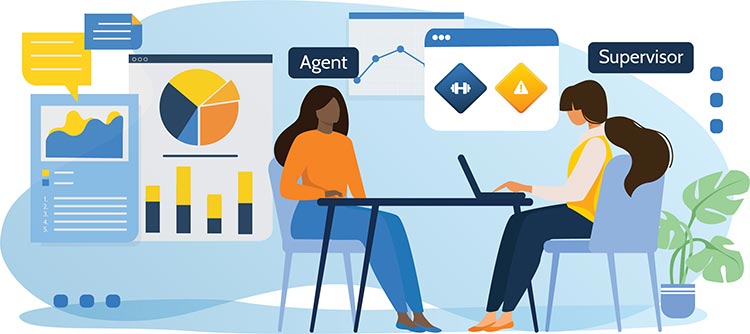
Voc Agent Coaching
SQM agrees with the vast majority of call center professionals' opinion that coaching Agents is critical. However, there is an opportunity to be more effective at Agent coaching to improve FCR, call resolution, and customer service. Given the excellent opportunity to improve Agent call resolution and Csat coaching, all supervisors should be trained on a voice of the customer (VoC) Agent Coaching model. Figure 1 shows an ongoing four-step VoC Agent Coaching model (i.e., 1. Call Assessment, 2. Develop Action Plan, 3. Agent Communication, and 4. Agent Feedback) and tips for helping Agents improve call resolution and customer service performance.
Figure 1: VoC Agent coaching model
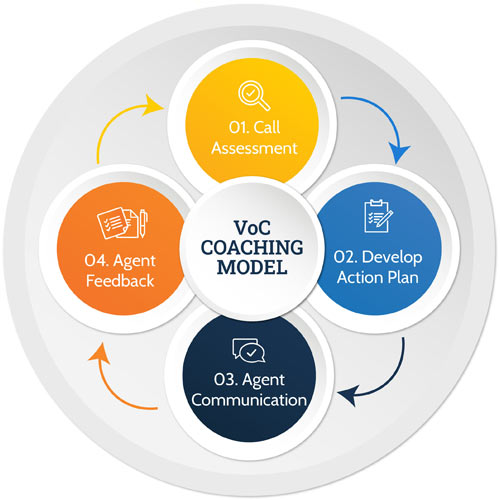
Step 1 - Call Assessment
The call assessment process is an ongoing customer survey business practice. When a supervisor assesses Agent calls, they need to determine the strengths and weaknesses for resolving calls and Csat. An Agent should have 4 to 10 post-call surveys conducted every month. To effectively help Agent's improve VoC performance, analyze their customer survey data results for monthly and yearly trends to identify opportunities for improvement. The customer feedback comments should also be examined.
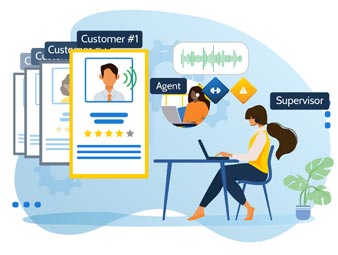
Customer surveys where the Agent is the source of error for an unresolved call should be the targeted calls that supervisors use for coaching Agents. If you have call recordings and screen capture for the same call that the customer was surveyed, it will provide additional insights. Before the supervisor's coaching session, the Agent should have the opportunity to review customer survey data, feedback, and call recordings (if available) for self-assessment.
Step 2 - Develop Action Plan
The supervisor develops an action plan for improving the Agent's performance for two VoC metrics (e.g., call resolution and Csat). The Agent should only be accountable for VoC metrics they have a direct impact on. For example, VoC call resolution and Csat metrics are essential customer service metrics and are well accepted by Agents for accountability of their performance.
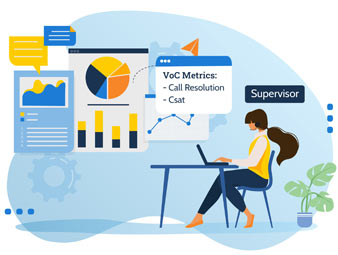
Step 3 - Agent Communication
The supervisor communicates with the Agent about their call resolution and Csat performance in a private setting. The supervisor starts the coaching session using questions (e.g., What areas do you think you did well on?, What areas do you think you need to improve on?) which shows interest in the Agent's self-assessment and helps the Agent to think about their VoC performance.
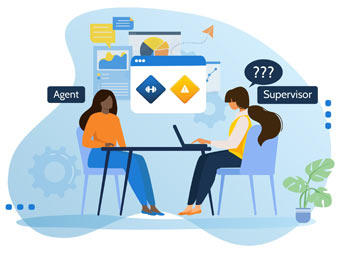
The supervisor ensures the Agent understands the customer survey process and what is expected for VoC call resolution and Csat targets. The supervisor's assessment and feedback recognize the Agent's strengths and the opportunities for improvement. The supervisor reviews the action plan with the Agent to gain their acceptance of the action plan and their commitment to increase call resolution and Csat performance.
Step 4 - Agent Feedback
The Agent consistently receives feedback on areas identified in the action plan to check progress. The supervisor provides the Agent feedback on specific positive behaviors and behaviors that still need improvement. It is important to remember that most Agents want to be high call resolution and Csat performers. Supervisors need to share best practice calls and tips for improving the call types and call reasons with which the Agent struggles.
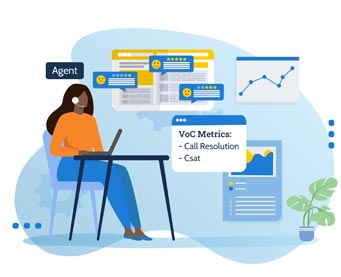
An essential element in the feedback session is for the supervisor to express their confidence in the Agent's ability to improve or achieve high call resolution performance. It is crucial to recognize incremental VoC call resolution and Csat improvement. Coaching feedback should end on a positive and encouraging note.
Agent coaching for improving Agent call resolution and Csat performance can be one of the most gratifying, rewarding, and challenging aspects of a supervisor's job. An excellent supervisor guides, educates and encourages Agents to improve or achieve high call resolution and Csat performance. If a supervisor does not provide quality feedback, an Agent may think they are doing a great job when they are not. Or conversely, if an Agent is doing a great job but eventually stops because they feel that nobody acknowledges their improvement or outstanding VoC performance.
Conclusion
Given that traditional quality assurance has had little or no impact on improving First Call Resolution and customer satisfaction, it is worth considering other methods to improve customer service. Using post-call surveying and effective VoC Agent coaching has a proven track record for increasing FCR rate and improving customer service. Most Agents prefer the customer judging their call quality versus a QA evaluator. At SQM, we believe that QA is an effective method for evaluating call compliance, and customer surveying is a more effective method for evaluating customer service. You can make a strong business case; you need QA and customer surveying methods to meet the organization and customer needs.
Quick Related Links
First Call Resolution Definition First Call Resolution PPT First Call Resolution Benefits Employee Engagement First Call Resolution Operating Philosophy Call Handling Best vs Worst Agents Agent Recognition Celebrating Agent Success CQA Form Customer Quality Assurance
